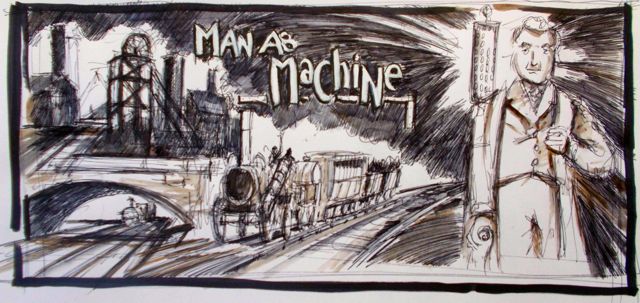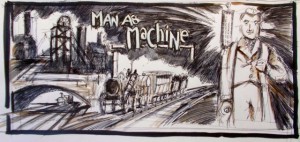Tarquin O’Flaherty continues his discourse on the development of the steam locomotive.
Stephenson’s behemoth, (The Rocket) nevertheless, despite its failure in the beauty contest, when asked to, merrily chugged up and down the approved course, day after day, repeatedly demonstrating its reliability, pulling power and speed.
When the Monday of the second week came, Hackworth’s ‘Sans Pareil’ was back in the fray, at least for about two hours. The failure of a water pump ended its chances when no one could be found to repair the damage. To add to its troubles, the judges found that the weight of the engine was outside the rules and they promptly disqualified it!
The ‘Novelty’, having been taken apart and put back together again in four days, re-entered the trial on the Wednesday. It went around the course twice, fully loaded, before, (alas) a boiler pipe burst. To repair this damage in the allotted time was impossible, so the ‘Novelty’ was withdrawn.
The ‘Rocket’, surrounded on all sides by hastily repaired machinery which coughed and spluttered and died repeatedly, demonstrated again and again its capacity to haul itself, fully loaded up an incline at at least twice the speed of any stationary engine. For the duration of the trials, ‘Rocket’, without a single breakdown, covered a distance of at least 70 miles whilst fulfilling every requirement laid down by the competition. Its performance also proved conclusively that locomotives and not stationary engines (or indeed, horses) were the only suitable form of power for the new Liverpool-Manchester line.
The shameful bias of the Mechanics’ Magazine continued…
‘…the ‘Novelty’…as soon as it is repaired…and but for the accidents it unfortunately met with…it will accomplish…the tasks assigned to it…’
The magazine then proceeds to cast aspersions on the judges;
‘…it appears that… the judges have had only the name and not the power of judges… the Directors reserving to themselves the power of deciding which is best entitled to the premium…’
This ungenerous attitude continues on for another four or five hundred words, and includes the astonishing statements that;
‘…the ‘Novelty’ is the sort of engine that will be found best adapted to the purposes of the railway…’ and that the ‘Sans Pareil’ ‘…is at least as good an engine as the ‘Rocket…’
before it is forced to admit that the ‘Rocket’ has utterly outperformed its rivals..
Almost all of this disgraceful bias may be explained when it is understood that the ‘Mechanics’ Magazine’ was based in London and was run by professional engineers, quite a few of whom had, from time to time, felt the sharp end of George Stephenson’s tongue. There was William James who had failed to finish his survey of the Liverpool-Manchester line and Charles Vignoles whom Stephenson had rejected as his assistant. These two alone were easily enough to influence the magazine’s anti-Stephenson outpourings.
Happily, the world did not stop or go on the word of this petty magazine. The results of the trials were very quickly relayed around the world and orders were arriving thick and fast at the Robert Stephenson Newcastle works. Four locos were immediately ordered for the Liverpool line. Oddly one anti-Stephenson member of the Liverpool board, Mr James Cropper, managed to include an order for two of the ‘Novelty’ engines. This little triumph enraptured all at the Mechanics’ Magazine, but only for a little while. Both engines, for reasons not immediately available to us, failed their tests and were rejected.
Hmmm…curiouser and curiouser…
TO BE CONTINUED . . . .


